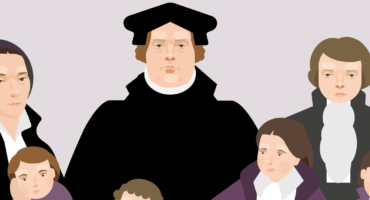Our Cultural institutions Page highlights our ongoing support of museums and cultural institutions with free accounts and access to tools. In Cultural Heritage Spotlight, we’ll explore museums and cultural institutions who are using 3D technology to bring new life to their collections. Today’s blog post features the Stromness Museum and its recent archaeological rediscovery.
A long lost Neolithic human figurine found at Skara Brae in the 1860s has been rediscovered in the collections of Stromness Museum, Orkney.
Dr David Clarke identified the figurine among artefacts from Skaill House donated to the museum without provenance in the 1930s, while undertaking research on Skara Brae funded by Historic Environment Scotland. David Clarke said:
“Amazingly, we found it in the last box of the day. I’ve always thought this figurine to be lost forever so seeing it staring back at me from its bed of tissue paper was completely unexpected and very exciting.:

Kathleen Ireland, Chair of Stromness Museum said:
“Stromness Museum has a superb collection of artefacts from Skara Brae, but this figurine has instantly become the new jewel in our collections. We are always pleased to welcome researchers and this rediscovery highlights what can found through painstaking research in museum stores.”
The representation has been carved from a piece of whalebone and measures 9.5cm high by 7.5cm wide. Eyes and a mouth have been cut in the face and the body has a navel, but is otherwise unadorned. Holes through the head and body may have been used to suspend the figurine.
The figurine was originally discovered by William G. Watt, the local laird, when excavating a stone bed compartment in House 3 of the Neolithic village.

Watt’s find was briefly described as a ‘idol’ or ‘fetish’ in a report of discoveries at Skara Brae by the antiquarian George Petrie in 1867, but was otherwise only known by a sketch in Petrie’s notebooks, now held in the manuscripts of the Society of Antiquaries of Scotland.
Prehistoric representations of the human form are exceptionally rare in Britain. This figurine was the first Neolithic example discovered, but was largely forgotten. Hugh Morrison, Collections Manager for Historic Environment Scotland said:
“The rediscovery of the figure is significant as it emphasises many of the similarities in the late Neolithic assemblages and structures from Skara Brae and Links of Noltland. It’s also hugely exciting, because it opens the door for re-examining other objects in our collections and may shed light on other figurines found at HES commissioned excavations, such as the Westray Wife discovered at Links of Noltland.”
This understated but hugely important figurine, nicknamed the ‘Skara Brae Buddo’, is now being displayed for the first time in Stromness Museum alongside artefacts from Skara Brae that have not previously been displayed.
To get some additional context, we asked two questions to Dr Hugo Anderson-Whymark, Trustee of Stromness Museum.
When did Neolithic people settle in the Orkney Archipelago?
People were present in Britain for around 10,000 BC, and we have hunter gatherers on Orkney from c7000 BC. There was some movement of people when farming was adopted in the Neolithic, but many people who adopted this new lifestyle would have been locals.
Hunter gatherers were present in Orkney from around 7000 BC, but farming did not arrive until around 3600 BC. Some of the first farmers are likely to have been immigrants who arrived animals, crops and the skills needed for this new lifestyle, but local communities would also have adopted farming over time. By 3000 BC when this figurine was made small vibrant villages of stone built houses, like Skara Brae, were present across Orkney.
How did they make it to Orkney at that time?
The sea has only risen by 1m in Orkney since 5000 BC, so the coastline would have been similar to today. This means that [Neolithic people] must have arrived by boat, bringing cattle, sheep and goats. Some artefacts were also exchanged over distances of several hundred km. We think they must have been using skin boats, as they leave little archaeological trace. The seas around orkney can be very treacherous, so they would have needed to have been skilled sailors. We’ve never found a Neolithic boat… that would be a good find!

Thanks for sharing, Hugo!
If you are part of a cultural institution, get in touch with us at museums@sketchfab.com to set up your free business account.
Press contacts:
Dr Hugo Anderson-Whymark, Trustee of Stromness Museum: Mobile: (+44) 7740648774. Email: hugo.anderson-whymark@york.ac.uk
Dr David Clarke: Home: (+44) 131 5521971. Mobile: (+44) 7779092855. Email: incontext003@gmail.com
Notes:
Skara Brae is a stone built late Neolithic (c.2900-2400 BC) settlement on the Bay of Skaill, Mainland, Orkney. It was discovered by William Watt (1777-1866) after a storm in 1850. Skara Brae forms part of the Heart of Neolithic Orkney World Heritage Site and is managed by Historic Environment Scotland.
Stromness Museum was founded by the Orkney Natural History Society in 1837 and is one of Scotland’s oldest independent museums. It holds exceptional collections of natural history, geology, maritime history and archaeology. The museum is a registered Scottish Charity (No. SC021455).
Dr David Clarke was Keeper of Archaeology in National Museums Scotland and one of its predecessor institutions, the National Museum of Antiquities of Scotland, from 1981-2011. He is currently working on the publication of his own excavations at Skara Brae, together with a comprehensive presentation of all the finds from the site.
Buddo means ‘friend’ or ‘person’ in Orcadian dialect.


